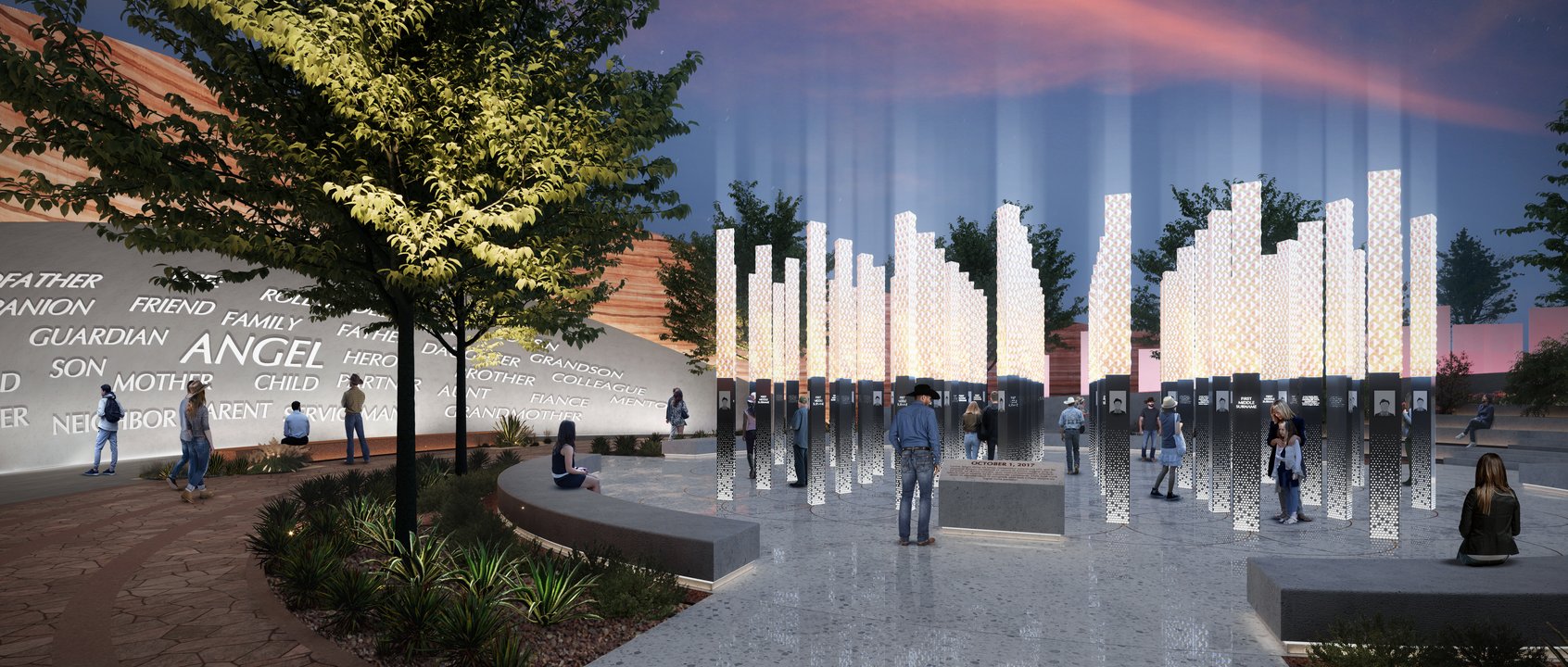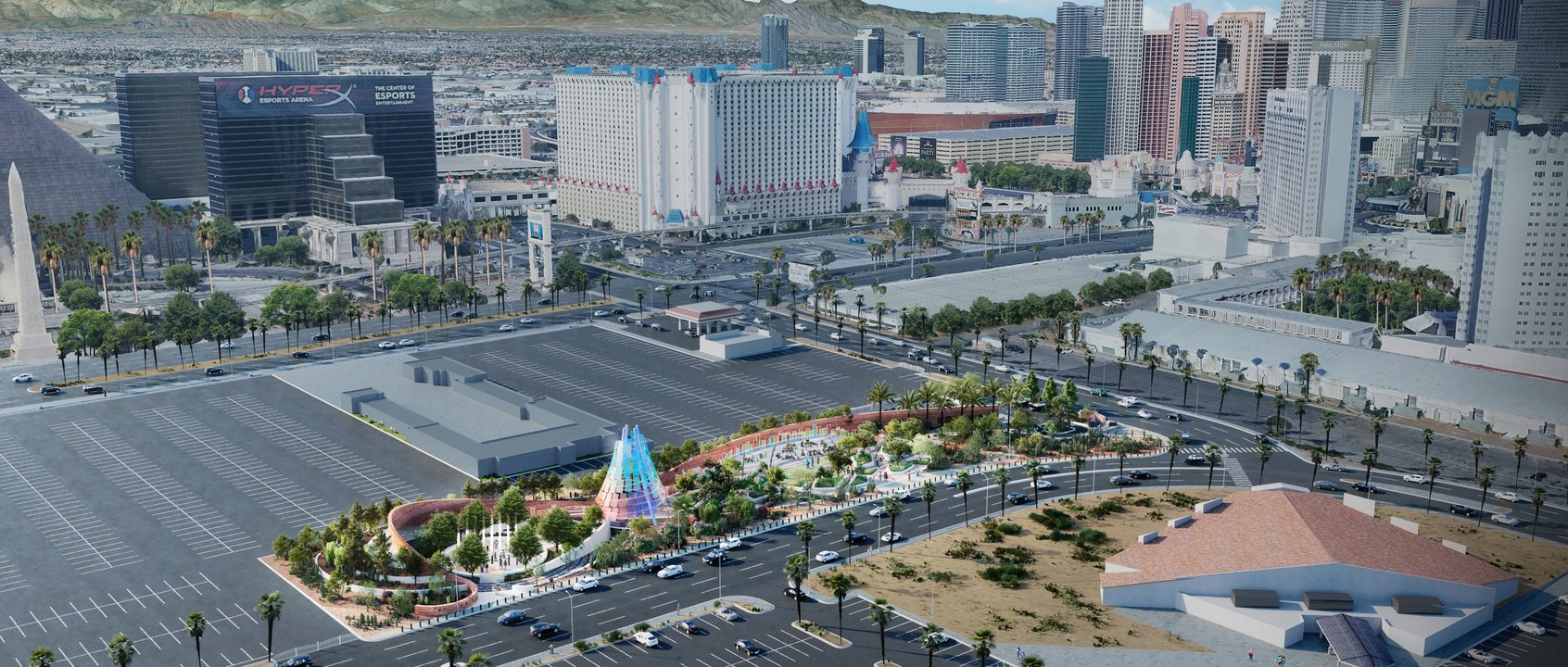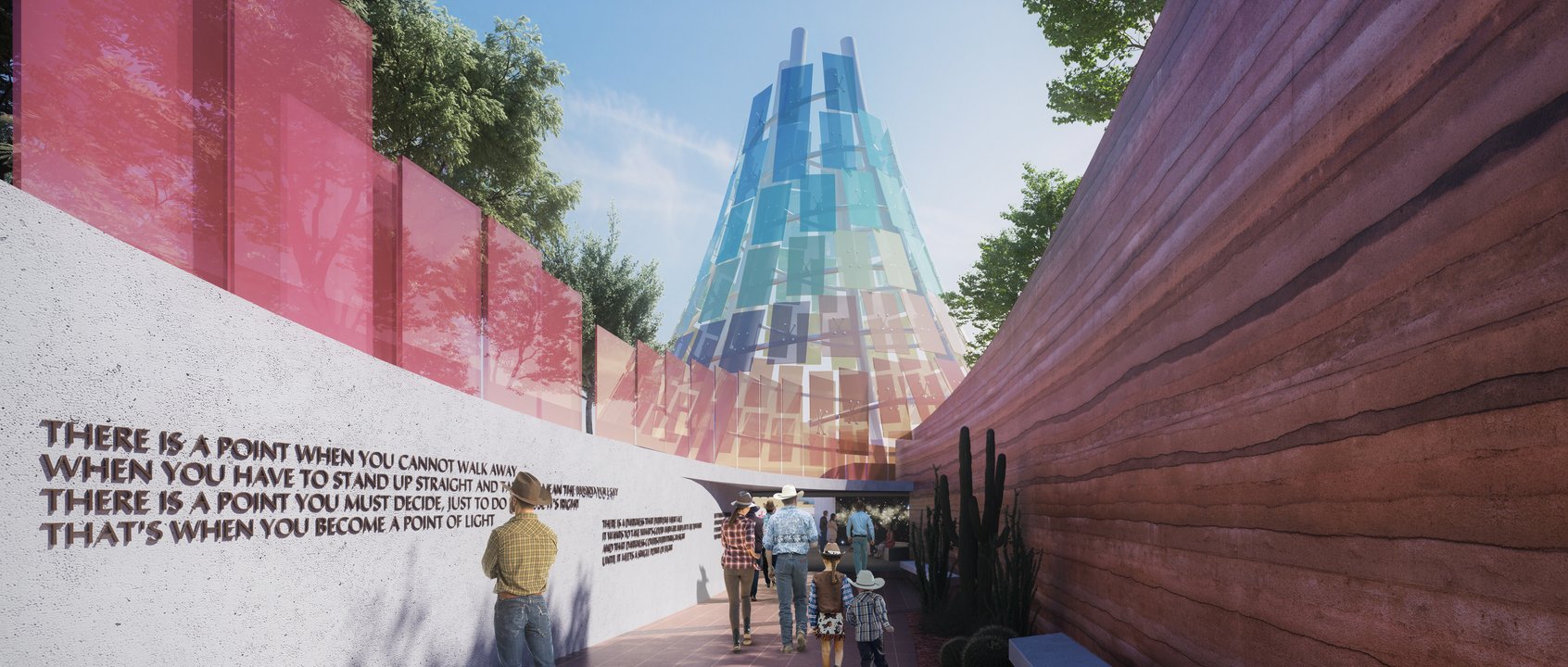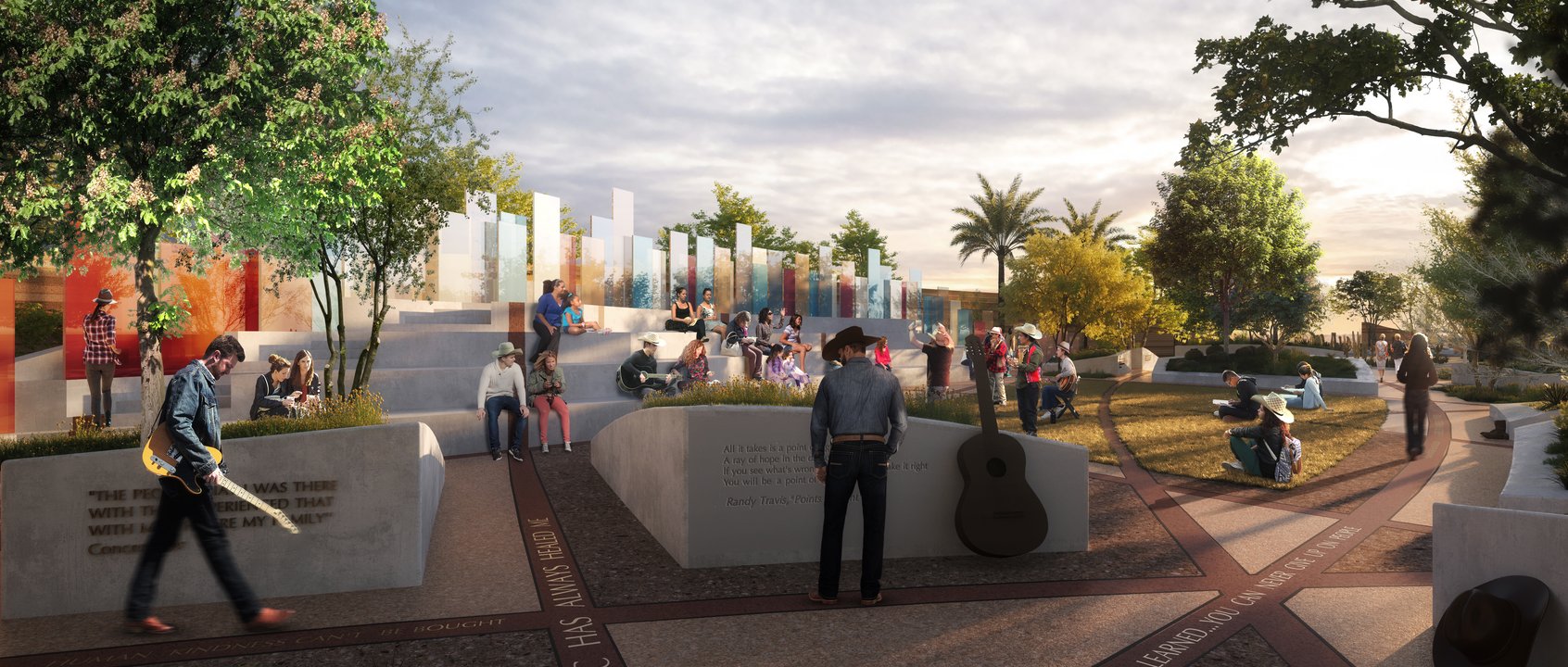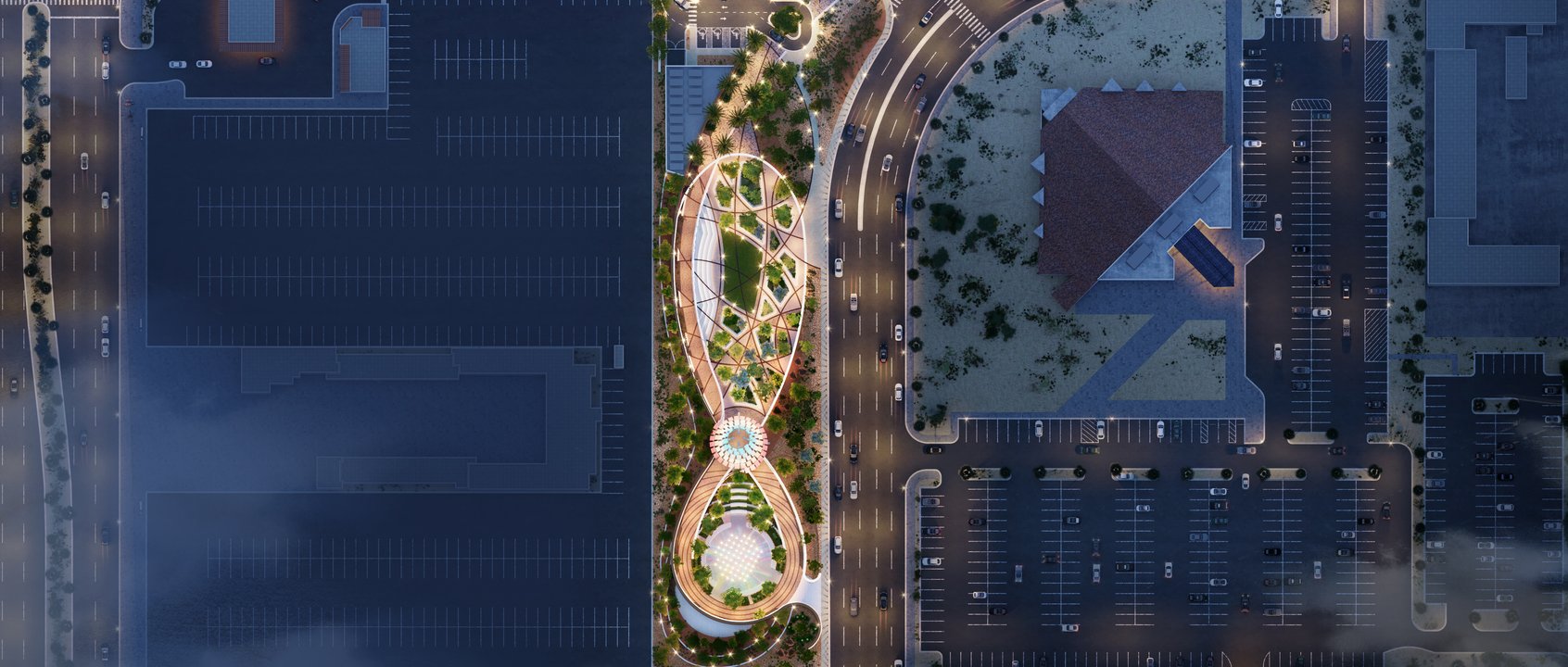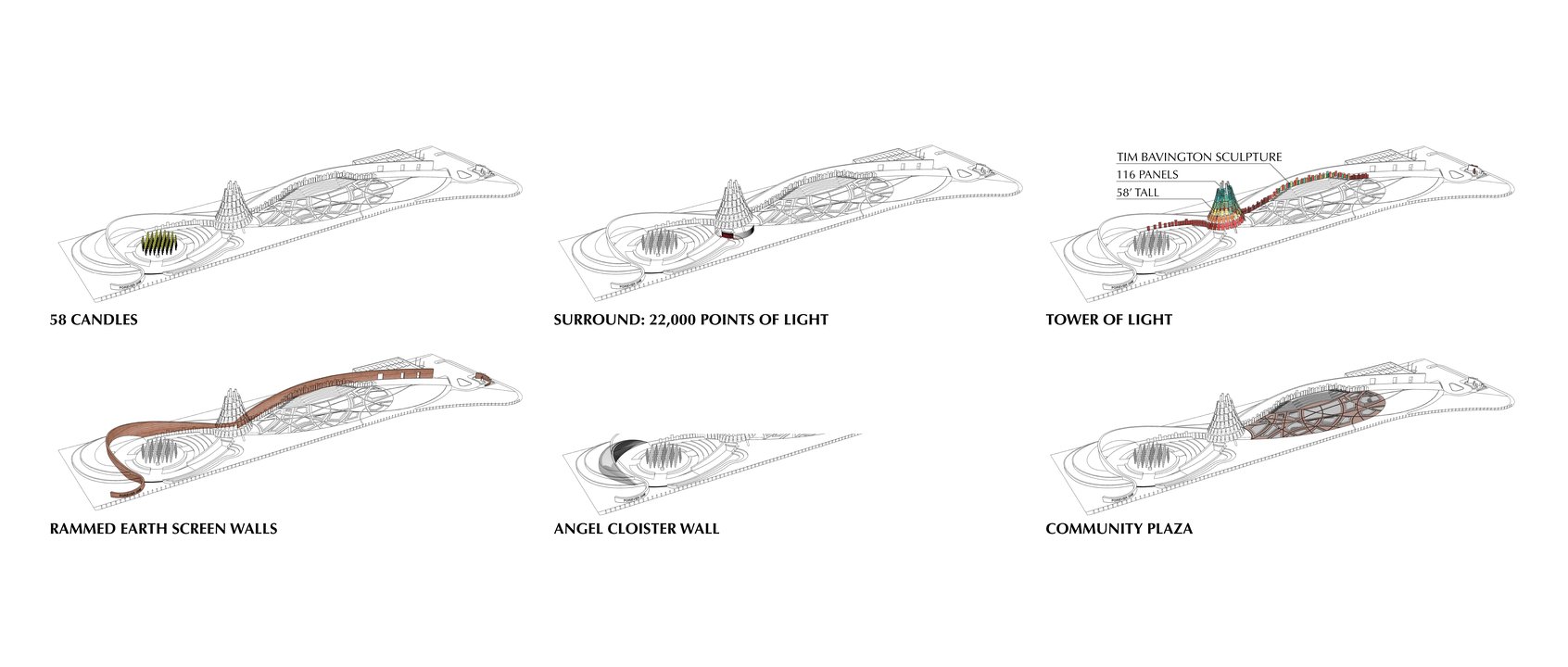JCJ Architecture is honored to be among the select teams shortlisted to participate in development of design concepts for The Memorial.
Please click here to download our Press Kit
We invite you to leave a message:
Voicemail: (702) 835-6311
Email: thememorial@jcj.com
About
The October 1, 2017, mass shooting in Las Vegas, NV, also known as the Route 91 Harvest Music Festival shooting, had profound impacts on society. The shooting resulted in the deaths of 58 people and left more than 800 injured.
One of the deadliest mass shootings in modern U.S. history, the event has caused immense grief and trauma for the victims, their families, and the wider community. The shooting has had a lasting impact on the mental and emotional well-being of survivors, witnesses, and emergency responders, with many individuals experiencing post-traumatic stress disorder (PTSD) and other effects requiring extensive support and counseling. The shooting served as a tragic reminder of the need for continued efforts to prevent such incidents, address mental health concerns, and improve public safety.
We applaud efforts by the Clark County Commission and the Memorial Committee to remember those who perished, to honor the heroes and to celebrate the resiliency and compassion of our community.
It is an honor to present our proposal for design of the Forever One Las Vegas Memorial.
We appreciate the contributions of our project partners:



Mission
The proposed Las Vegas Memorial is to honor the 58 victims, support their families and survivors, and acknowledge all the emergency responders who assisted those in need on that fateful night.
The memorial will serve as a place for individuals to reflect, grieve, and remember those who lost their lives. It will be a place to provide solace and healing for the community while also serving as a reminder of the importance of promoting peace, unity, and the prevention of violence.
It will become a symbol of how a community came together to commemorate those who have been lost, as a gathering place for people to share their stories and experiences, and as a place for support and connection with others who have been similarly affected.
Outreach & Artists
Our approach to the site began with a discovery process of an extensive community outreach where we conducted seven listening sessions with groups ranging from the families of the 58, survivors and other concertgoers, emergency responders, and other community members who have been impacted by the event. The purpose was to listen to their stories as a means of informing the memorial design and to gather valuable insights and understandings into the needs, preferences, and aspirations of all those who will be visiting the memorial. This was a crucial first step in the design process and it informed the many components and concepts that comprise the overall memorial experience.

We learned of the need for the memorial to have spaces dedicated for remembrance of the 58; we learned about the deep yearning for healing, uniting, and connecting with others; we began to understand the importance expressions of strength and courage in making lasting impressions. In addition to learning from the community outreach responses, we were deeply inspired by several of the creative expressions that were submitted as part of the invited public contributions. Drawing inspiration from Jason Swope’s notion of the candlelight vigils and the expression of vertical shafts of light as illustrated in Submission #97, we developed a concept of the “58 Candles” located at the heart of the memorial, honoring the 58 victims.




Eternal Love and Infinite Memory
When viewed from above, the memorial will be seen as an infinity symbol representing the concept of perpetuity and limitlessness. It suggests a state that extends beyond the confines of time and space, representing something that is everlasting such as eternal love or infinite memory for the victims. With over 18 million visitors flying annually into the Harry Reid International Airport, the memorial will stand out amongst the dense urban fabric as a symbol that represents how the human spirit can rise over tragedy, how hope can be found in despair, and how light can overcome darkness. This will be achieved not only through how the memorial is shaped but also by how it will be illuminated. The shape will be imprinted into the earth through an expression of light, one that will have great meaning and symbolism when seen from above.
When viewed from above, the memorial will be seen as an infinity symbol representing the concept of perpetuity and limitlessness. It suggests a state that extends beyond the confines of time and space, representing something that is everlasting such as eternal love or infinite memory for the victims.
The shape will be imprinted into the earth through an expression of light, one that will have great meaning and symbolism when seen from above.

1. The Entry: Prelude
2. Opening Versesat the ramp leading down to the surround
3. The Bridge:The Surround (Below)
4. 58 Candles / 58 Stories
5. Closing Verse
6. The Bridge: The Tower of Light (Above)
7. The Chorus:"Courage to Connect” / The Community Plaza
The Journey
The journey begins well before one ever arrives at the site. A 58’ tall Tower of Light will be highly visible from anywhere along the southern Las Vegas Strip. A prominent structure of colored glass rises from the center of the memorial in two intertwining spirals that taper up to the sky. It serves as a beacon to those traveling to the site and is a symbol that represents illumination, guidance, and a connection to the heavens. The Tower of Light stands tall during the day and radiates a beautiful, colorful glow in the evening hours as an icon to the city in remembrance of the tragic events of October 1, 2017. The tower is inspired by the stories that we heard through our engagement sessions of the first Remembrance Celebration.

Several participants mentioned the dark skies of that day that gave way to an opening of the heavens and shafts of light that beamed down from the sky as Mayor Caroline Goodman addressed the audience. The Tower of Light is a manifestation of that moment in time. It represents the rays of light that connect people to the heavens and reaches out to the celestial realm. We envision that the ‘front door’ to the memorial will be located at the intersection of E. Reno Avenue and Giles Street. It is here where the on-site journey begins. Whether guests are parking on-site, being dropped off, or walking from the Strip, everyone will be greeted by an entrance feature that establishes the initial perception of the journey and creates an impactful first impression that will resonate with the visitor. The primary elements that comprise the memorial are all introduced upfront in the form of rammed earth walls, colored glass panels (by Tim Bavington), and desert landscaping. This is the first impression of the memorial that will set the tone for the rest of the guest experience. Visitors will sense the scale of the rammed earth walls and walk along a juxtaposition of colored glass panels that conveys the name of the memorial and begins to tell the story immediately upon arrival. It is a key moment to orient visitors to the landmarks that they will encounter and to establish the type of narrative that will lead visitors through the site.


To express the concept of the site as sacred ground, the soil will be formed into an expressive rammed earth wall which will create a barrier that minimizes sightlines to the hotel tower.
Sacred Soil
Even though the memorial site is located off the Strip, it will have good pedestrian access from the west along E. Reno Avenue. To the south, the site is exposed to the location where the Route 91 Harvest Music Festival occurred, as well as the Mandalay Bay hotel tower.
Our design concept incorporates a unique strategy of repurposing the soil of the site. To express the concept of the site as sacred ground, the soil will be formed into an expressive rammed earth wall which will create a barrier that minimizes sightlines to the hotel tower. The rammed earth wall is a significant symbolic and visual element that runs along the west and south edges of the site.
The sacred soil will be excavated and compacted within the layers of the compressed earth, creating a sense of permanence and connection with the site. It is a highly visible and symbolic element that represents reverence for this place and will become a guiding element that leads one on their journey.

Surround: 22,000 Points of Light
Located at the lowest elevation along the journey, The Surround is a 1,600-square-foot circular chamber that conveys the concept of infinite space through an expression of 22,000 points of light. Being a concertgoer with an audience of 22,000 people can be an exhilarating and memorable experience. The collective energy and shared joy of listening to live music is a shared experience that creates a strong sense of community. The Surround is meant to invoke the feeling of what it is like to share in a unifying concert experience through a visual spectacle of becoming many, a truly immersive and unforgettable experience of being part of a 22,000-person audience.

The Surround is meant to invoke the feeling of what it is like to share in a unifying concert experience through a visual spectacle of becoming many
This can be represented in many ways, but we feel that an emotional connection can be made with curved digital screens that display moving pixels of light. Each pixel can be a photo that has been uploaded by a family member or concertgoer that comprises the Route 91 Harvest Music Festival community. As visitors enter The Surround, cameras will sense their presence and feed real-time data to an output of content that will engage the visitor and make it unique to everyone. The goal is to create a memorable, atmospheric threshold for visitors as they pass through The Surround to the 58 Candles.
58 Candles: The Remembrance Ring
As the journey continues, the colors and textures begin to transform as the story shifts to the loss of the 58 victims. The pathway materials take on a distressed and fragmented character symbolizing a shifting dynamic in the emotional journey as the joy of the concert turned to chaos. A 1:20 ramp extends out from The Surround and leads up to a dedicated area honoring the 58. This area is set 5’ below the street elevation to create a more insulated environment from the sounds of Giles Street. Here, the Remembrance Ring is a 58’ diameter space that is meant to honor the 58 victims who lost their lives on October 1, 2017. There are 58 triangular, vertical elements that are spaced at every 58” on center. These vertical elements are called the 58 Candles in recognition of the candlelight vigils and Jason Swope’s creative submission #65 whose artwork conveyed the emotion of that time. The base is to be fabricated out of a 7’ tall bronze metal that will have a tapering perforated expression up to an area allowing for the name of the victim to be etched into the metal. The other two sides are to contain a photo and a short description of the victim. A QR code will be displayed on the candle to allow visitors to gain a deeper understanding of who the victim was.

The Remembrance Ring is a solemn space allowing visitors to pay their respects and honor the memory of the victims.
The space provides a respectful environment for visitors to grieve and reflect.



Angel Wall
As a backdrop to the 58 Candles resides the Angel Wall, a curved cloister that expresses the relational names of the victims to others.
The Remembrance Ring is a solemn space allowing visitors to pay their respects and honor the memory of the victims. The space provides a respectful environment for visitors to grieve and reflect. A tiered landscape area allows for quiet seating for personal contemplation and mourning. The space is designed to evoke a sense of calmness and peace. As a backdrop to the 58 Candles resides the Angel Wall, a curved cloister that expresses the relational names of the victims to others.

It is a unique and poignant moment within the memorial journey where the curved cloister creates a peaceful and contemplative space for visitors to reflect and pay their respects. What sets the Angel Wall apart is its focus on expressing the relational names of the victims, emphasizing the personal connections they had with others. For example, words such as “Father,” “Wife,” “Daughter,” and “Friend” are but a few of the words listed on the wall. Most significant is the word “Angel,” positioned in the center, which is how they relate to all of us. By incorporating these relational names, the Angel Wall creates a powerful reminder of the multifaceted identities and the significance of the victims beyond their roles as victims.

Tower of Light
The Angel Wall reconnects the visitor to the rammed earth wall and begins to lead them back through the site. A 1:20 ramp connects the area of the Remembrance Ring to The Tower of Light. Here, colored glass plates align with the ramp wall and then sweep up onto the structure of the tower. Two interlocking spirals of colored glass panels rotate around the structural columns and rise to the heavens. The color of the glass transitions from earthen-colored glass panels to warm oranges, yellows, and soothing blues. It is an awe-inspiring architectural structure that symbolizes hope, aspiration, and the human spirit’s yearning for transcendence. While The Surround was about becoming many, The Tower of Light is about becoming one. During the day, the glass panels reflect and refract natural sunlight, thus creating a play of vibrant colors that captivate the spirit when viewed from below. The sky is perfectly framed, thus inviting visitors to pause and reflect on the interconnectedness of the world.
Several participants mentioned the dark skies of that day that gave way to an opening of the heavens and shafts of light that beamed down from the sky as Mayor Caroline Goodman addressed the audience. The Tower of Light is a manifestation of that moment in time. It represents the rays of light that connect people to the heavens and reaches out to the celestial realm.


Community Plaza: A Place for Music
The pathway under the Tower of Light flares out and expands into a Community Plaza. The plaza offers an open and accessible area where people can gather for ceremonies, memorial services, or even intimate concert events. It becomes a central space that encourages collective healing and support. Pathways of arcing geometries lead visitors through areas of raised planters with a covered tree canopy. The arcs represent different groups who were profoundly impacted by the tragic event. These pathways serve as a narrative journey, highlighting the experiences and contributions of musical artists, concertgoers, emergency responders, and the broader community. The arcs incorporate a combination of visual elements with quotes and lyrics. Visitors can explore the narratives along the paths, immersing themselves in the personal accounts while enjoying the lush landscaping and natural beauty of the plaza.
The plaza offers an open and accessible area where people can gather for ceremonies, memorial services, or even intimate concert events.
It becomes a central space that encourages collective healing and support.
Architect: JCJ Architecture
Landscape Architect: Lifescapes International
Museum & Exhibit Designers: Thinc Design
Structural & Civil Engineering: Lochsa Engineering
Mechanical, Electrical & Plumbing Engineering: Bear Label Consulting Engineers
Lighting Consultant: Lighting Design Alliance

